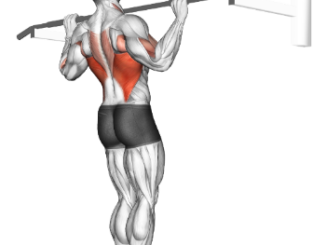
Before you start wasting hours upon hours on those boring treadmills, stationary bikes, and elliptical machines, let’s examine if low-moderate intensity, long duration cardio exercise is really doing your body any good, or if it is mostly a waste of time. I hope you will concede upon finishing this article that there is a better way to get in great shape, and it doesn’t have to involve endless hours on boring cardio machines.
It is common to hear fitness professionals and medical doctors prescribe cardio workouts at a low to moderate intensity. The recommendations normally constitute something along the lines of “perform 30-60 minutes of steady pace cardio 3-5 times per week, at a moderate heart rate level.” Now…Before you just give in to this popular belief and become the “hamster on the wheel” doing endless hours of boring cardio, I’d like for you to consider some recent scientific research on this topic. This research indicates that steady pace endurance cardio may not be all it’s cracked up to be.
First, realize that our bodies are designed to perform physical activity in bursts of exertion followed by recovery, or stop-and-go movement instead of steady state movement. Recent research is suggesting that physical variability is one of the most important aspects to consider in your training. This tendency can be seen throughout nature as all animals demonstrate stop-and-go motion instead of steady state motion. In fact, humans are the only creatures in nature that attempt to do “endurance” type physical activities.
Most competitive sports (with the exception of endurance running or cycling) are also based on stop-and-go movement or short bursts of exertion followed by recovery. To examine an example of the different effects of endurance or steady state training versus stop-and-go training, consider the physiques of marathoners versus sprinters. Most sprinters carry a physique that is very lean, muscular, and powerful looking, while the typical dedicated marathoner is more often emaciated and sickly looking. Now which would you rather resemble?
Another factor to keep in mind regarding the benefits of physical variability is the internal effect of various forms of exercise on our body. Scientists have known that excessive steady state endurance exercise (different for everyone, but sometimes defined as greater than 60 minutes per session most days of the week) increases free radical production in the body, can degenerate joints, reduces immune function, causes muscle wasting, and can cause a pro-inflammatory response in the body that can potentially lead to chronic diseases. On the other hand, highly variable cyclic training has been linked to increased anti-oxidant production in the body and an anti-inflammatory response, a more efficient nitric oxide response (which can encourage a healthy cardiovascular system), and an increased metabolic rate response (which can assist with weight loss).
Furthermore, steady state endurance training only trains the heart at one specific heart rate range and doesn’t train it to respond to various every day stressors. On the other hand, highly variable cyclic training teaches the heart to respond to and recover from a variety of demands making it less likely to fail when you need it. Think about it this way — Exercise that trains your heart to rapidly increase and rapidly decrease will make your heart more capable of handling everyday stress. Stress can cause your blood pressure and heart rate to increase rapidly. Steady state jogging and other endurance training does not train your heart to be able to handle rapid changes in heart rate or blood pressure.
For example, lets say you jog trying to maintain the same pace for a good 45-minute run. As long as you didn’t encounter any big hills along the way, you probably maintained approximately the same heart rate the entire time – let’s say it was 135 beats/minute. Now, let’s contrast that with a much more effective workout of doing 20 minutes of alternating all-out wind sprints with walking for a minute or two in between sprints to recover. With this more effective workout, you’re rapidly changing your heart rate up and down on a much larger scale, forcing it to grow stronger to be able to handle varied demands. Your heart rate would probably alternate from 110-115 during the recovery walks all the way up to 160 bpm or more during the sprints. This doesn’t mean that sprints are the only way to take advantage of this style of training. Any style of training that incorporates highly variable intensity will give you these improved results.
The important aspect of variable cyclic training that makes it superior over steady state cardio is the recovery period in between bursts of exertion. That recovery period is crucially important for the body to elicit a healthy response to an exercise stimulus. Another benefit of variable cyclic training is that it is much more interesting and has lower drop-out rates than long boring steady state cardio programs.
To summarize, some of the potential benefits of variable cyclic training compared to steady state endurance training are as follows: improved cardiovascular health, increased anti-oxidant protection, improved immune function, reduced risk for joint wear and tear, reduced muscle wasting, increased residual metabolic rate following exercise, and an increased capacity for the heart to handle life’s every day stressors. There are many ways you can reap the benefits of stop-and-go or variable intensity physical training.
In addition to the previously mentioned wind sprints, most competitive sports such as football, basketball, racquetball, tennis, hockey, etc. are naturally comprised of highly variable stop-and-go motion. In addition, weight training, HIIT, body weight exercises, Cross Fit, Boxing, Boot Camp style workouts naturally incorporates short bursts of exertion followed by recovery periods. High intensity interval training (varying between high and low intensity intervals on any piece of cardio equipment) is yet another training method that utilizes exertion and recovery periods. For example, an interval training session on the treadmill could look something like this:
Warm-up for 3-4 minutes at a fast walk or light jog;
Interval 1 – run at 8.0 mi/hr for 1 minute;
Interval 2 – walk at 4.0 mi/hr for 1.5 minutes;
Interval 3 – run at 10.0 mi/hr for 1 minute;
Interval 4 – walk at 4.0 mi/hr for 1.5 minutes;
Repeat those 4 intervals 4 times for a very intense 20-minute workout.
The take-away message from this article is to try to train your body at highly variable intensity rates for the majority of your workouts to get the most beneficial response in terms of heart health, fat loss, and a strong, lean body.





Be the first to comment